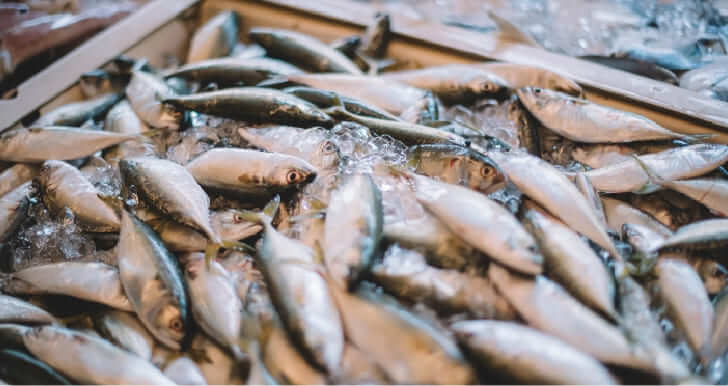Malaysia Market
- The fisheries sector is vital to the economy and food security of Malaysia as it supports rural development by creating employment opportunities as well as serve as an important source of animal protein.
- The two major components of the fisheries sector are marine capture fisheries (coastal and offshore) and aquaculture.
- In 2019, Malaysia ranked 16th in world capture fisheries production and 7th in world aquaculture production of aquatic plants. The bulk of the fish landings come from the capture fisheries with the rest from aquaculture, while production from the inland fisheries is small.
Source: http://www.seafdec.org/fisheries-country-profile-malaysia-2022/
- The primary products offered are live, fresh, and frozen fish, crustaceans, and shellfish. These products are primarily sold through Hypermarkets & Supermarkets, the leading distribution channel with around four-fifth share in the overall Fish & Seafood distribution in Malaysia.
- Frozen fish & seafood will be the fastest growing value category, registering a CAGR of 8.5%. The buying behavior of consumers is inclined toward value for money products in the Malaysian Fish & Seafood market.
- Fish & Seafood market accounted for more than two-fifth share in the overall Food retail sales in Malaysia.
Source: https://www.globaldata.com/store/report/consumer-and-market-insights-fish-seafood-in-malaysia/
- Malaysia’s per capita consumption of fish and seafood has been 46.9kg annually and ranks second in Southeast Asia.
- However, fish sightings in Malaysia have decreased especially in the north of the peninsula, by up to 70% primarily due to illegal fishing. Malaysia lost RM6 billion to illegal, unreported, and unregulated fishing in 2016, and even though enforcement and monitoring were tightened, we still lost RM4.2 billion in 2019.
Source: https://www.thesundaily.my/opinion/moving-towards-a-common-fisheries-policy-LE9644793
- As a result of the high demand and dwindling local fish sightings, Malaysia spends RM1 billion yearly on fish imports.
Source: https://www.dailyexpress.com.my/news/196157/malaysia-spends-rm1-billion-yearly-on-fish-imports/
ASEAN Market
- Expected revenue in 2023 : US$78.99 billion
- Annual growth (CAGR 2023 – 2027) : 5.38%
- Expected volume growth expected in 2024 : 4.8%
- Expected volume to amount in 2027 : 5,397.9mkg
Source: statista.com
- Fish segment dominate market share compared to other seafood segment : 61%
- Higher market share of fish than shrimp : 68.4%
- Fish segment growth by value : 21.2%
- 10 ASEAN countries accounted for a quarter of global fish production. Of the world’s top ten largest fish producers, four are Indonesia, Thailand, Vietnam and Philippines.
- Total fisheries production in 2010 : 10.83 million
- 4th longest coastline country & largest producer in Southeast Asia, Indonesia.
- compared with previous year’s, with 9.82 million tonnes catch : increase of 10.29%
- 5.2 million tonnes of fish and fisheries products produced by Vietnam and Philippines
- 850,959 tonnes produced by Myanmar, ranked as a major global producer. Food and Agriculture (FAO) data shows aquaculture production in Myanmar reach eight times larger than the 98,912-ton production volume in 2000.
Source: investasean.asean.org
Fish and Seafood Market Key Players in Asia Pacific
- Asian Sea Corporation Public Company Limited
- Blue Snow Food Co., Ltd.
- Maruha Nichiro Corporation
- Nippon Suisan Kaisha Ltd
- Thai Union Group PCL



